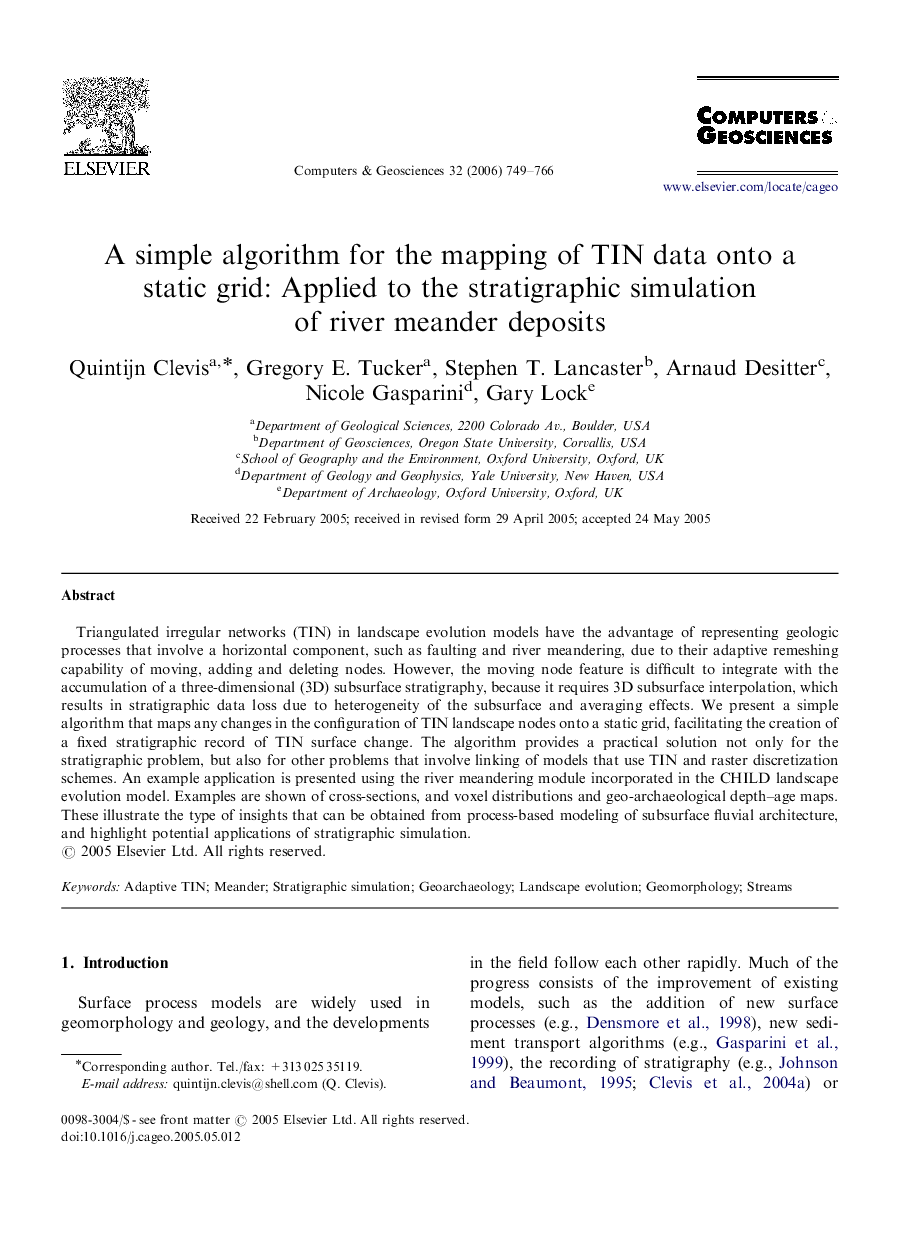| Article ID | Journal | Published Year | Pages | File Type |
|---|---|---|---|---|
| 508522 | Computers & Geosciences | 2006 | 18 Pages |
Triangulated irregular networks (TIN) in landscape evolution models have the advantage of representing geologic processes that involve a horizontal component, such as faulting and river meandering, due to their adaptive remeshing capability of moving, adding and deleting nodes. However, the moving node feature is difficult to integrate with the accumulation of a three-dimensional (3D) subsurface stratigraphy, because it requires 3D subsurface interpolation, which results in stratigraphic data loss due to heterogeneity of the subsurface and averaging effects. We present a simple algorithm that maps any changes in the configuration of TIN landscape nodes onto a static grid, facilitating the creation of a fixed stratigraphic record of TIN surface change. The algorithm provides a practical solution not only for the stratigraphic problem, but also for other problems that involve linking of models that use TIN and raster discretization schemes. An example application is presented using the river meandering module incorporated in the CHILD landscape evolution model. Examples are shown of cross-sections, and voxel distributions and geo-archaeological depth–age maps. These illustrate the type of insights that can be obtained from process-based modeling of subsurface fluvial architecture, and highlight potential applications of stratigraphic simulation.
